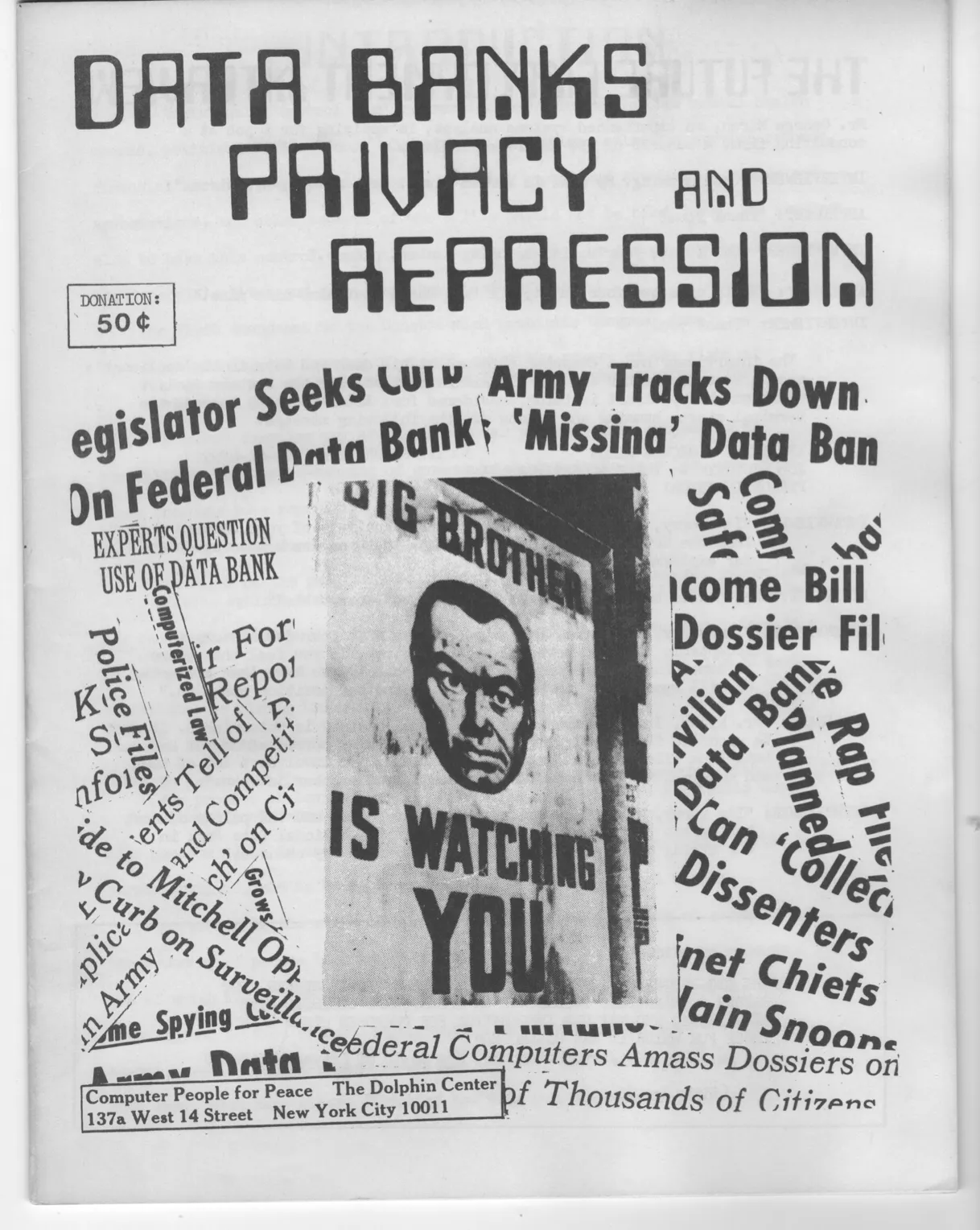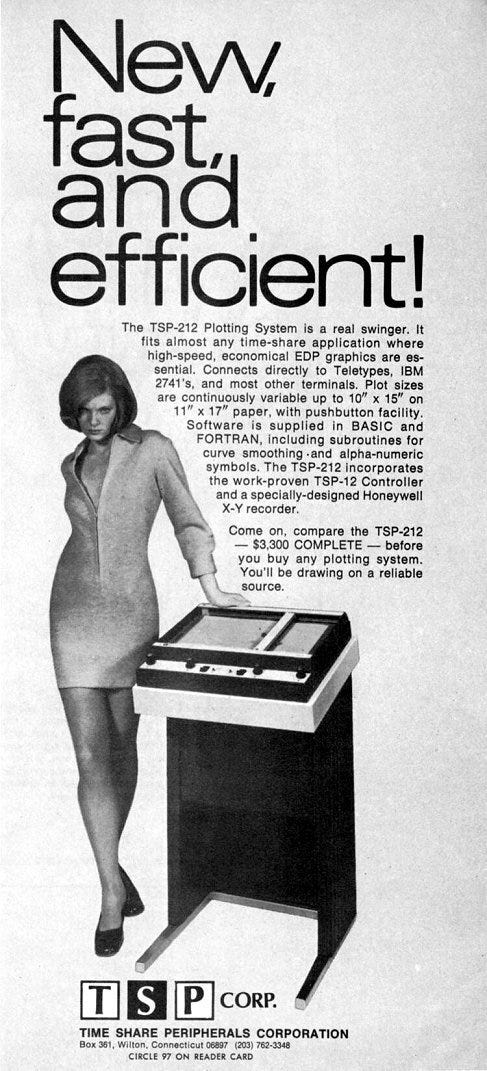
A guest post by Joan Greenbaum
Joan Greenbaum is an activist, writer and professor. She has written extensively on concerns dealing with work, technology, and gender. She was one of the founders of Computer People for Peace, a group of tech workers who organized around anti-racism, labor organizing, gender equality and opposition to military work starting in the late 1960s.
Questioning the work we do is woven into the historical fabric of the tech industry. When I was part of a group called Computer People for Peace (CPP) within the Antiwar movement of the late 1960s and early 70s, our initial focus was on opposing military work. Through actions involved with opposing the war we realized that we also needed to address a wide range of connected issues within what we now call the tech industry — from racism and sexism through rights of privacy, tenant rights and concerns about surveillance and worker rights — all in the infancy of mainframe computer era. CPP represents an example of home-grown push-back that in many ways point to actions of tech workers today.
For around five years CPP published a newsletter called Interrupt that reported on activities in New York and around the country and increasingly moved toward an analysis of the conditions that were of concern to us as workers in the industry. While the times looked and felt quite different from today, the threads of CPP’s analysis and actions share some remarkable similarities with tech workers and tech industry issues today.
Black Balloons / Military Work
Computer People for Peace started in 1968 in New York and grew into a loose national network by the early 1970s. We were primarily made up of computer programmers who increasingly found that the work-a-day world of our jobs blurred into the larger framework of the war and the corporations we worked for. Initially, Computer People aimed our leaflets, newsletters and actions at others within the computer industry, doing what at the time was called ‘consciousness raising’ — an important step in the growing feminist movement at that time. Our activities in 1970 took us to Atlantic City for the ACM’s Joint Computer Conference which flouted new hardware along with panels and papers. It had an estimated audience of 25,000 people.
As an article in Electronic News reported (May 11, 1970 Issue), we handed out leaflets about Honeywell’s ‘war production work’ and were then “escorted by police from the main floor of the huge computer conference along with the black balloons” we carried emblazoned with ‘Honeywell Kills’. We were not interested in a confrontation, but had selected Honeywell because of its war work, which represented 34% of sales and outranked larger computer firms such as IBM and RCA.
By September of that year computer workers had pushed the ACM 70 Conference to include panels about the social implications of work. And CPP was joined by Scientists and Engineers for Social and Political Action from Stanford who called for a ‘not-to-work’ pledge — against firms with military contracts. Now, tech workers in several organizations have rallied around the demand that they no longer be involved in military work.
While CPP allied closely with other anti-war and ‘movement’ groups of workers, we did not , as a general practice, overlap with students as computer science was just emerging from a few mathematics departments and there were very few students who considered themselves computer scientists.
Feudal Hierarchies and Power Structures
In Computer People For Peace’s working groups and through its newsletter Interrupt, we analyzed the power structure in the computer industry, which we felt was becoming a ‘de facto class structure’. As the Philadelphia Evening Bulletin reported after our actions at the Joint ACM conference:
“Keypunch operators (they punch the information onto computer cards) are overwhelmingly minority group women; that computer operators are largely non-college men, many from minority groups; that programmers and analysts are mainly college educated middle class whites; and that managers and corporate officials are virtually all men”.
(Kari Abraham, “Computer Activists Attend Parley”, Philadelphia Evening Bulletin, May, 6, 1970.)
In a Viewpoint article in the weekly Computerworld publication, one woman commented that:
“ The computer field now looks like a feudal hierarchy with a large number of women in keypunching and lower level programming jobs at the base”. Describing the way the world looked at that time, she stated “ Trade publications often contain advertisements showing women, of course partially dressed, with the latest hardware or software gimmicks”.
(Joan Dublin, “Woman Terms Computer Industry ‘Feudal Hierarchy”, Computerworld Magazine, July, 1970.)

The issues we raised bear a similarity to actions by tech workers today, such as the well-known Google walk-out in November 2018 which revolved around demands to address sexual harassment.
Data Banks, Privacy, and Repression
Privacy was also an important Computer People For Peace issue. In 1971, we published a booklet entitled “Data Banks, Privacy and Repression” at a time when ‘random access’ files were newly being introduced. CPP asked questions about what the collection and use of more accessible data would lead to. Our Data Banks booklet recommended to a congressional hearing a list of actions that seem prescient today. They included:
- The acknowledgement that there are no technical safeguards for data
- Data collection should be limited and sale or interchange between companies and governments should not be allowed; and
- Technical workers have an obligation not just to their employers but to the public to inform and protect the public about the harmful effects of misuse of data.
The People’s Research Body and Data Disarmament Teams
We also called for a
”‘People’s research body, that would “ be composed of individuals from consumer interest organizations, legal rights groups, citizens intert committees and workers from the computer field”… and that it “remain apart from the government”.
In 1967, the Freedom of Information Act, which although rather weak, offered the first markings of citizen protection along with the 1969 Fair Credit Reporting Act (credit cards were just coming into use). To supplement these laws CPP advocated for what we called ‘Data Disarmament Teams’ to follow up on court-mandated destruction of existing data banks.
Racism and Repression
Computer People also created a Project IBM which publicized how the IBM 360/50 (a top model for its time) was used in South Africa for maintaining the system of Apartheid by making sure the police had information to track the Black population. The CEO of IBM tried to justify the project by telling the Wall Street Journal on April 24, 1972:
“That of the company’s 1,017 employees in South Africa they employed 84 ‘non whites’ “. “If things go well’, he said, “we hope we can add 14 Blacks this year”.
Project IBM grew out of CPP’s involvement in raising bail for Clark Squire, a computer programmer with more than 12 years of experience including work for NASA, who was arrested as one of the Black Panther 21 in New York City (Clark Squire, now known as Sundiata Acoli, has been in prison without parole since 1979, see here and here). Squire, like the others, was arrested on supposed charges of ‘conspiring to bomb public places’. The trial which became one of the classic ‘conspiracy’ trials of its time (such as the Chicago 8, the Seattle 7 and the trial of the Berrigan’s), lasted from October 1970 through May 1971. The jury acquitted all the Panthers on all charges, despite the length of the trial. They did so in 1 hour and 40 minutes.
In our efforts to raise bail for Squire we talked about racism wherever we went, including computer conferences, demonstrations and discussions inside the companies we worked for. We were initially successful both in getting the $100,000 bail knocked down to $50,000 (which could be raised with a few thousand dollars in bail bonds), and successful in actually raising the bail bond funds. At one ACM conference CPPers collected $ 470 from conference participants, and a pledge by the ACM to investigate the case. But as the New York Times reported in Dec 1970,
“Justice Murtagh said that because of ‘information in possession of the court’ relating ‘not only to the defendant Squire but relating to all of the defendants present he was revoking bail for the remainder of the trail for the defendants who were in jail”.
Organizing Begins
In the early 1970s the U.S. entered a prolonged period of recession and employment conditions within the tech industry were beginning to deteriorate from their halcyon days in the late 1960s. Programmers and operators were losing their jobs, companies held back on hiring, salaries were stagnating and the rigid hierarchy between and among occupational groups intensified. Conditions such as these along with the plight of older programmers (reported as over 40!) were reported on in our regular Interrupt newsletters.
I was involved with a small group of CPPers together with organizers from more established industries interested in forming a national union of computer workers. Our meetings and leaflets were aimed at encouraging workers to talk to others within their organizations about the need for collective bargaining. While our aim was perhaps too overarching — hoping for a national union capable of striking and therefore shutting down computing across sectors of the economy — we began working with local groups and national CPP chapter members who were already dissatisfied with the conditions of their labor. These concerns of computer workers gave rise to ongoing discussions about ‘what is good work’, and if good work with computers could be created by worker collectives and small organizations within the industry. While the discussions proliferated and were an important ongoing form of ‘consciousness raising’, the central union concept did not gain traction. There are a number of reasons for this, and probably many lessons to be learned for use today on the practice of union organizing. But one that may be useful is that the concept of a central union, organized around traditional industrial labor relations may not be the right model for tech workers then or now. At the time that we started the union organizing, there was increasing pressure from the FBI and its New York based COINTEL project. They sent agents to surveil and wiretap in order to harass and in many cases black-list those involved; some of us were not able to work for several years.
The rich radical history of Computer People for Peace is just one illustration of earlier models for understanding the political economy and social implications of technology. When CPP folded its tents it offered its mailing list to Science for the People, an activist group asking and acting on critical questions around science and technology. Computer Professionals for Social Responsibility (CPSR) which formed in Seattle in 1983, was another group focusing on making important policy arguments to Congress and other governmental bodies. While they disbanded in 2013 their approach was to “Question Technology” which is having lasting implications with researchers and activist groups. These stories illustrate just a few examples about how threads of resistance and actions are embedded in the history of tech work.
About Joan Greenbaum
Joan Greenbaum has worked with, and written about, technology since getting hooked on programming in the early mainframe computer days with IBM.
She has written extensively on concerns dealing with work, technology, and gender, with a particular focus on participatory design. Among publications she is author of: Windows on the Workplace (Monthly Review Press, 2004); Design at Work (Erlbaum Press, 1991 with Morten Kyng); and In the Name of Efficiency (Temple University Press, 1979).
Greenbaum is Professor Emerita at City University of New York (CUNY) where she is on the faculty of Environmental Psychology (the study of place) and the program in Interactive Technology and Pedagogy. While she has studied labor process changes and technologies in many different office occupations, her focus now is on tech workers themselves and the ways that they are seeing their work processes changing like other occupations. She is an activist in her union, the PSC-CUNY (AFT local 2334), which represents 30,000 workers and where she is on the Executive Committee and has served as Co-Director of Environmental Health and Safety. She is a mother and grandmother and New York City lover.






